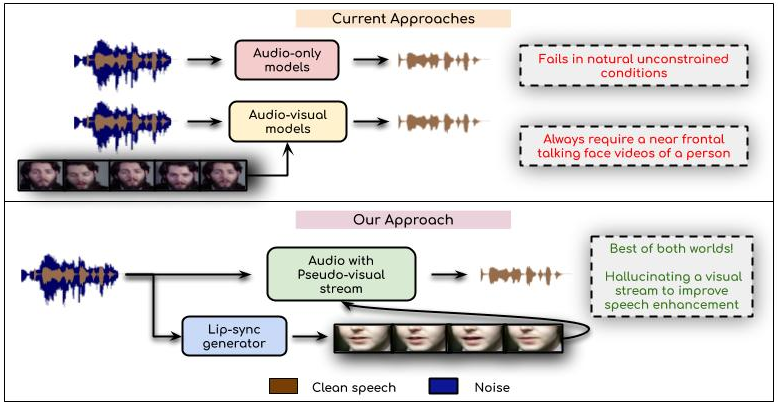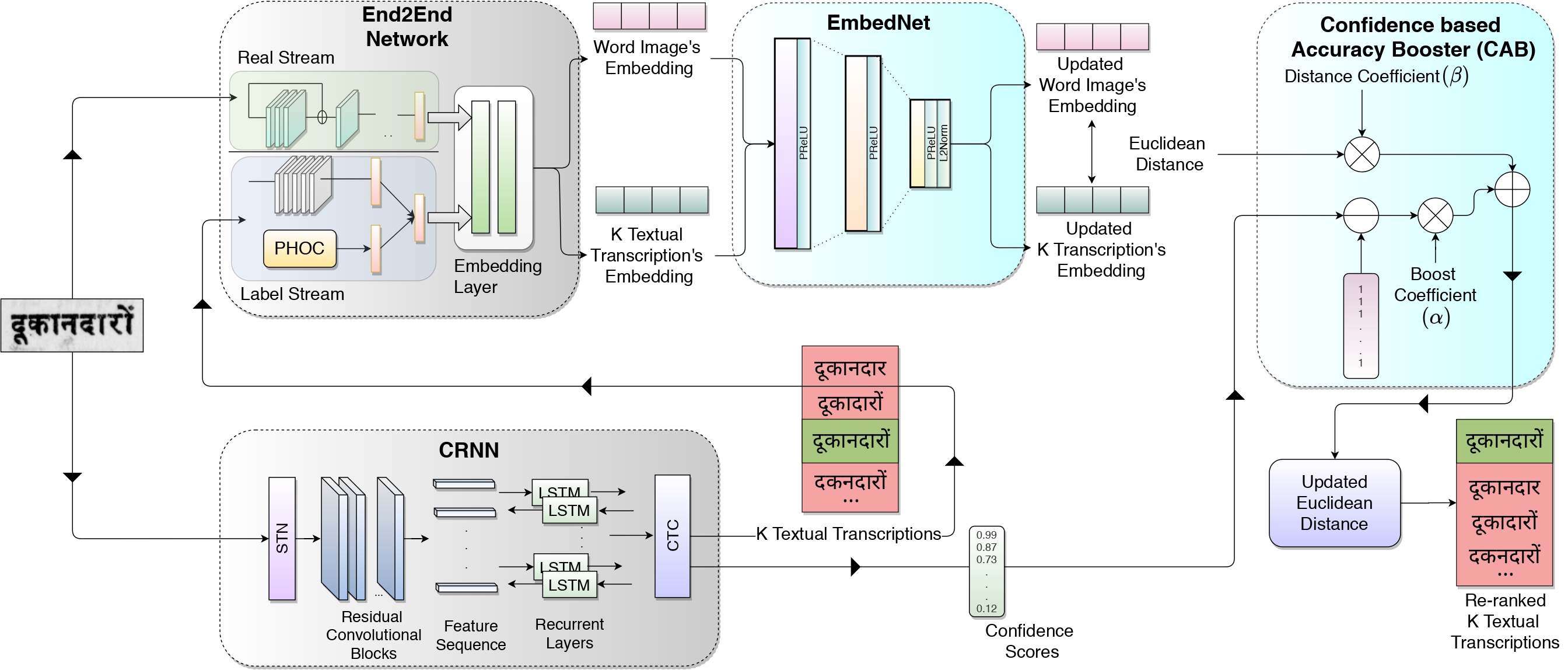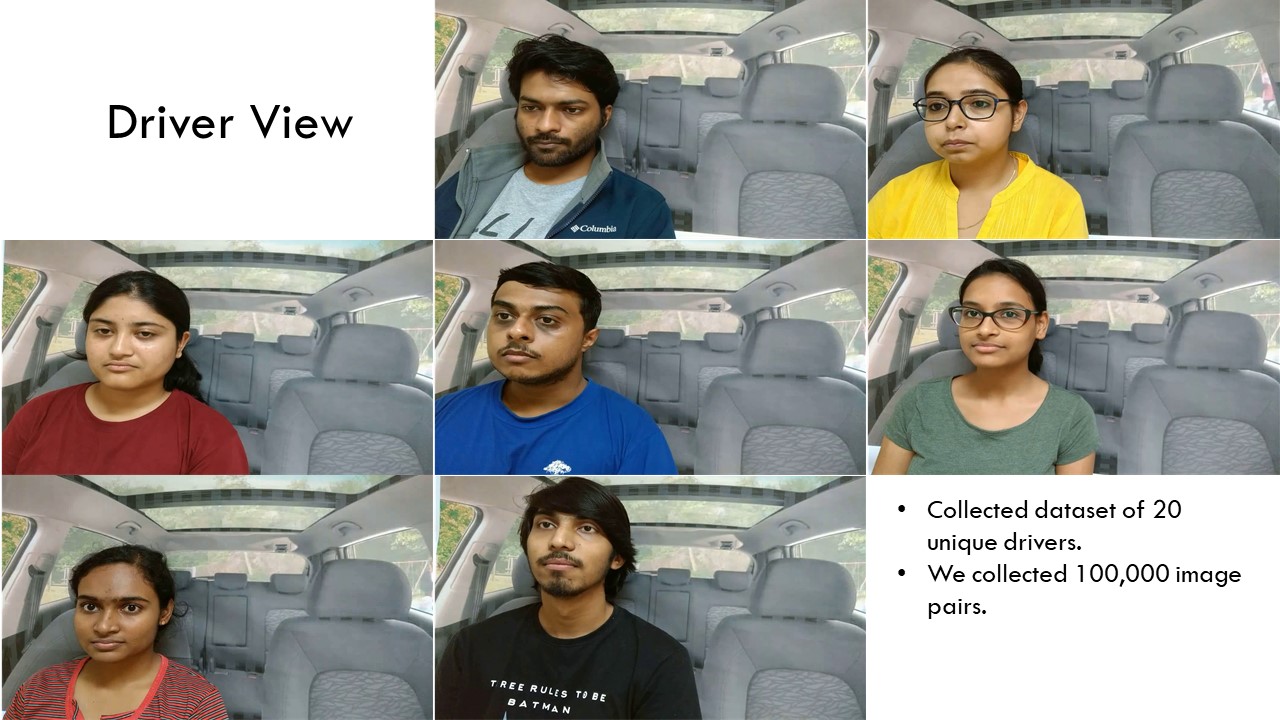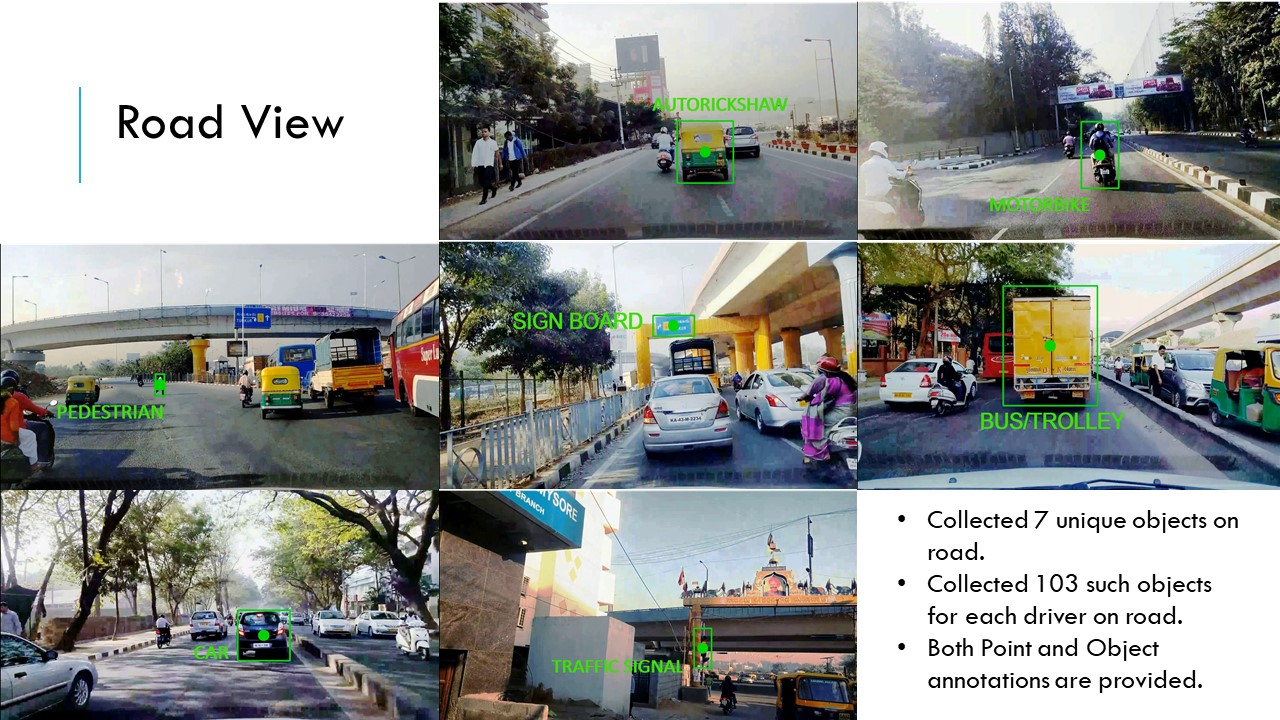Visual Speech Enhancement Without a Real Visual Stream
Sindhu Hegde*, Prajwal Renukanand* Rudrabha Mukhopadhyay* Vinay Namboodiri C.V. Jawahar
IIIT Hyderabad Univ. of Bath
[Code] [Paper] [Demo Video] [Test Sets]
WACV, 2021
We propose a novel approach to enhance the speech by hallucinating the visual stream for any given noisy audio. In contrast to the existing audio-visual methods, our approach works even in the absence of a reliable visual stream, while also performing better than audio-only works in unconstrained conditions due to the assistance of generated lip movements.
Abstract
In this work, we re-think the task of speech enhancement in unconstrained real-world environments. Current state-of-the-art methods use only the audio stream and are limited in their performance in a wide range of real-world noises. Recent works using lip movements as additional cues improve the quality of generated speech over ``audio-only" methods. But, these methods cannot be used for several applications where the visual stream is unreliable or completely absent. We propose a new paradigm for speech enhancement by exploiting recent breakthroughs in speech-driven lip synthesis. Using one such model as a teacher network, we train a robust student network to produce accurate lip movements that mask away the noise, thus acting as a ``visual noise filter". The intelligibility of the speech enhanced by our pseudo-lip approach is almost close (< 3\% difference) to the case of using real lips. This implies that we can exploit the advantages of using lip movements even in the absence of a real video stream. We rigorously evaluate our model using quantitative metrics as well as qualitative human evaluations. Additional ablation studies and a demo video in the supplementary material containing qualitative comparisons and results clearly illustrate the effectiveness of our approach.
Paper
Demo
Please click on this link : https://www.youtube.com/watch?v=y_oP9t7WEn4&feature=youtu.be
Contact
- Sindhu Hegde -
This email address is being protected from spambots. You need JavaScript enabled to view it. - Prajwal K R -
This email address is being protected from spambots. You need JavaScript enabled to view it. - Rudrabha Mukhopadhyay -
This email address is being protected from spambots. You need JavaScript enabled to view it.





 This is the basic pipeline followed by the OCR Search Engine. Digitised images after the preprocessing steps, ex. denoising, are passed through a segmentation pipeline, which generates line level segmentations for the document. These together are passed in the Indic OCR developed at CVIT that generates the text output . This text output, segmented output (line level segmentations) and document images form the database of the IRE system.
This is the basic pipeline followed by the OCR Search Engine. Digitised images after the preprocessing steps, ex. denoising, are passed through a segmentation pipeline, which generates line level segmentations for the document. These together are passed in the Indic OCR developed at CVIT that generates the text output . This text output, segmented output (line level segmentations) and document images form the database of the IRE system.  The datasets (NDLI data & British library data) contains document images of the digitised books in the Indic languages
The datasets (NDLI data & British library data) contains document images of the digitised books in the Indic languages  Statistics of the NDLI dataset and the British Library dataset.
Statistics of the NDLI dataset and the British Library dataset.